Pop Will Eat Itself
Box Frenzy / Now for a Feast / This is the Day… This is the Hour… This is This! / The Pop Will Eat Itself Cure for Sanity / The Looks or the Lifestyle
Cherry Red
As I noted in my review of the new incarnation of Pop Will Eat Itself’s disappointing 2011 release New Noise Designed by a Sadist, the Poppies’ position in the history of alternative music is mercurial, relegated to whatever (usually minor) role is convenient for journalists at the time. While very few artists are ever well summarized in critical shorthand, the unbelievably fast evolution of the core group comprised of frontmen and songwriters Graham Crabb and Clint Mansell and guitarist Adam Mole across their original run of records leaves them prone to being unfairly pigeonholed by those unfamiliar with the range of their work. Various Best Ofs and Greatest Hits collections have gone a ways towards combatting the most common misunderstandings of the band’s legacy (particularly in North America where the finale of their original run as Reznor-approved industrial rockers is most remembered), but for the fan already well aware of the protean quality of PWEI’s work, a new series of expanded reissues of the band’s first four albums and early odds n’ sods collection Now for a Feast paints a much more interesting picture, one worthy of some analysis and summarization.
Before we begin, a caveat: at 32 I’m still far too young to have caught most of the Pop Will Eat Itself show as it was airing. Consequently the opinions presented here are formed entirely from a historic perspective, and are based solely on several years of listening to these albums, a smidgen of research and the absorption of the excellent reissue liner notes by project co-ordinator Richard Anderson. I’m nowhere near comfortable with the idea of trying to actually “review” these records, I’m far too close to them to be anything resembling critical (if you came here hoping to get a recommendation on which of the five to buy, let me save you the trouble of reading my rambling bullshit, the answer is This is the Day… This is the Hour… This is This!). Think of it as one fan’s stilted, none-too brief history, and feel free to leave corrections in the comments. And no, I have no idea what the hell Grebo means.
Box Frenzy (1987)
The music press has a notoriously difficult time understanding irony short of it being writ large, which probably accounts for the Poppies first proper record being largely dismissed as the work of “mouthy gob-shit bastards”. Of course the fellas were perfectly willing to live up to that image so long as it meant continued attention from the NME who seemed particularly bent out of shape about the unabashed laddishness on display on Box Frenzy. Whether or the notorious cover of the Wilde Knights’ “Beaver Patrol” was meant to be taken seriously (possibly?) seems irrelevant in the light of history, like the best pop agitators PWEI could have cared less about explaining themselves. “Hit the Hi Tech Groove” may have been a pisstake intended to head off criticisms of their new sample happy approach, but it’s “You don’t have to have integrity/You don’t have to have ability/listen kiddies it’s true what they say/You don’t need respectability” chorus made for a pretty effective mission statement.
Inspired by the leftfield success of their cover of Sigue Sigue Sputnik’s “Love Missile F1-11″ (and its 12” Megamix by Warp Records founder Rob Gordon, which is conspicuous by it’s absence in the reissue bonus tracks) Box Frenzy is the schema for the albums of PWEI’s classic era. Graham Crabb’s abdication of his role as drummer to take up co-vocalist duties with Clint Mansell (a catalytic move whose importance can’t be overstated) sealed the direction of their debut, a remarkably prescient mixture of guitars, samples, programmed beats and scratches that had far more in common with the Beastie Boys circa License To Ill than the more journalist friendly indie punk that got them noticed in the first place. “Inside You” and “There is no Love Between us Anymore”, which respectively look backwards and forwards, may be the most substantive songs present for those seeking to create context for Box Frenzy, but truthfully it’s the willfull dumbness of “Let’s Get Ugly” and “She’s Surreal” that best define it.
Now For a Feast (1988)
As a collection of their early EPs and singles (some of which were issued under the group’s original name Wild & Wandering) Now For a Feast is an important historical document for trainspotters like myself, if only to establish the enormous leap sideways that was Box Frenzy. Made up of a clutch of Buzzcocks inspired punk songs (listen to “Monogamy” if you want justification for that comparison), none longer than two and a half minutes, the most telling thing about it is probably the snotty attitude on display. The vein of girl-craziness that runs through PWEI’s work are here, although shot through with an uncomfortable level of misogyny on “Sick Little Girl” and “Black Country Chainstore Massacre”. In some alternate universe where they never bought a sampler Pop Will Eat Itself are remembered as this band, although we most certainly got the better deal.
For the fan, the reissue’s inclusion of early versions of “Ugly” and “Inside You” in their original incarnations as straight rock songs is welcome, exactly the kind of meaty bonus material you desperately want when you’re buying an album you probably already own in several formats. Also of note are the Wild & Wandering demo tracks, the best of which is “Johnny Ray”, an almost Cure-like slice of psychedelic post-punk, a strain of influence that appears nowhere else in the band’s catalogue.
This is the Day… This is the Hour… This is This! (1989)
This is the Day… is perhaps the strongest overall statement Pop Will Eat Itself have ever issued. Denied the critical respect history has afforded to spiritual compatriots The KLF, its omnivorous attitude towards popular music and culture is best reflected by the lyrics to “Can U Dig It?” which famously shouted out everyone from The Transformers and Alan Moore to AC/DC and Renegade Soundwave. Markedly denser and more sample-happy than Box Frenzy, it stands as both a tribute to the Poppies increasing level of studio mastery and the legal no man’s land of sampling that clearance laws would soon close off passage to. The version of “Def Con One” (a track that had been kicking around at least as far back as the sessions for the first album and was released in an inferior single version in 1988) that appears on it typifies the record’s groove-based approach: for the first time Pop Will Eat Itself were funky, drawing equally from disco and the proto-house sounds that were percolating through the United Kingdom.
While recognizing the importance of This is the Day… This is the Hour… This is This! to sample culture and as a largely unsung example of the growing proficiency of Brit rock musicians at making dance music (how different things might have been if the band had been from Manchester instead of Stourbridge) it’s “Wise Up Sucker!”, the number that cuts closest to a straight rock song that remains its most definitive moment. An exhilarating blast of post-adolescent angst riding high on a wave of Flood produced guitars, it’s an uncharacteristic moment of personal vulnerability from a group who up ’til then had shrouded any semblance of genuine emotion in sarcasm and delinquent attitude. Presented in both a demo and a 12″ Youth version beyond the classic album cut, it’s as bracing now as the first time I heard it, and for my money the band’s finest moment (and believe me, I’ve spent enough on Pop Will Eat Itself records to make that tired simile mean something.)
The Pop Will Eat Itself Cure for Sanity (1990)
While songs like This is the Day…‘s “The Fuses Have Been Lit” had started to uncover a more sinister edge to the Poppies, it wasn’t until The Cure for Sanity that it emerged fully as part of their approach. While fans at the time can be forgiven for expecting a more light-hearted album based on first single “Touched By The Hand Of Cicciolina” a balaeric house number-cum soccer anthem inspired by the titular Italian politician/pornstar, that impression was quickly dismissed by the distinct menace of Cure’s definitive moment, “Dance of the Mad Bastards”. While Primal Scream and the Happy Mondays were mining the same intersection of electronic dance music and alternative sounds, neither approached it with the same ear for the foreboding evidenced by “Nightmare At 20,000ft” or “Axe of Men”. Though it’s not the strongest showing for PWEI as songwriters and hook crafters (possibly accounted for by the incredibly brief period between it and the preceding album), it does show far less dependance on easily recognized samples, the prescient departure from which would inform their latter two albums.
Of all the albums in the reissue campaign, Cure for Sanity has the most alternate 12″ versions and remixes present as bonus material, appropriate enough in light of the thriving dance culture that birthed it. Unsurprisingly, most of the mixes drop the baleful texture of the originals, scattering it across a spectrum of techno and house genres that were still coalescing at the time of their release. Three marginally different versions of “Dance of the Mad Bastards” is probably too many for all but a dedicated completist (mea culpa) to justify, but the inclusion of gems like the glorious dub-techno version of “Cicciolina” by Renegade Soundwave and the full six minute house piano version of the oft trotted out “92°F” are really nice to have, irrelevance to the casual fan be damned.
The Looks or the Lifestyle (1992)
Up ’til The Looks or the Lifestyle Pop Will Eat Itself tended to chain smoke albums, lighting each one in rapid succession from the fire of the one before it. The two years between Cure and The Looks made all the difference from a creative standpoint. In yielding their greatest chart success with “Get the Girl, Kill the Baddies!” it was divisive amongst fans even as it courted greater mainstream attention and success. The addition of a live drummer to the line-up for the first time since before Box Frenzy was only the tip of the iceberg; almost without exception the album is represented by thick walls of guitar and bass, the electronics and samples relegated to a more ornamental role that would have been unthinkable a few years earlier. As a move away from the dance sounds that had long been part of the group’s DNA, it’s understandable that some followers may have been put out by the Poppies delivering a “rock” record, although that reaction fails to recognize that it has some of the most consistent songwriting of PWEI’s career.
“Eat Me, Drink Me, Love Me, Kill Me” lays out the new Poppy plan, Mansell giving an entirely unprecedented raw and angry vocal performance over a slice of uptempo alt. rock more reminiscent of Therapy? than anything from the preceding album. In contrast to the emergence of a new lyrical preoccupation with the poor state things in the UK (“Karmadrome”, “Harry Dean Stanton”) that would eventually peak in its successor Dos Dedos Mis Amigos, The Looks or the Lifestyle actually feels quite upbeat. The aforementioned “Get the Girls, Kill the Baddies” cruises hard on a bassline underpinned by Fuzz Townshend’s cymbal heavy drumming, while “Bulletproof”‘s toy piano and loping rhythm accent the sardonic “Everybody’s Happy Man!/We’re Bulletproof!” refrain. Those seeking an alternate vision of the album in the extensive demos included on the reissue’s second CD will largely disappointed, almost without exception they play as rougher versions of the record proper.

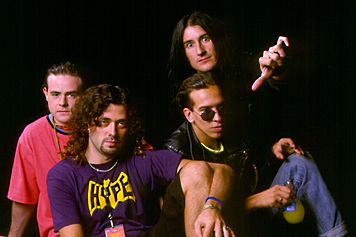
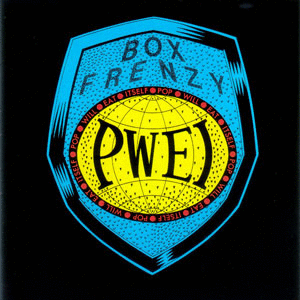

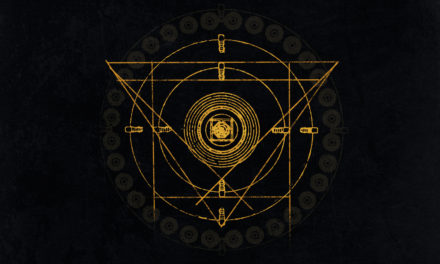

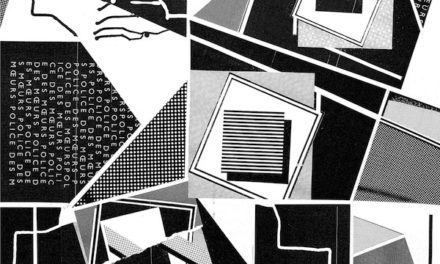
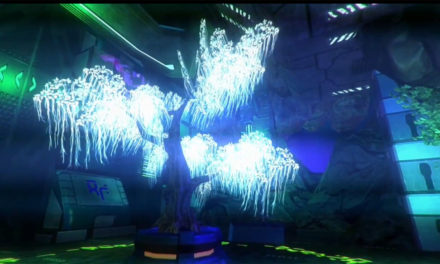
Trackbacks/Pingbacks